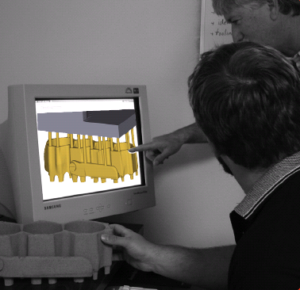August 1, 2024. Houston, TX, USA. For immediate release.
CPFD Software is pleased to announce that we are now the global provider of the Arena-flow Sand Core Engineering CAE software product, including responsibility for software development, licensing, support, training and services.
Arena-flow, originally developed by CPFD Software affiliate Arena-flow LLC, is specialty software used by the metal casting industry to simulate the production of sand cores and molds. Arena-flow uses the same foundational multiphase numerical method to compute gas-particle motion as Barracuda Virtual Reactor (3D MP-PIC), but with an interface, features, and post-processing capabilities that address the specific needs of OEMs, foundries, and tooling suppliers.
“While the CPFD name is new to many, the Arena-flow user community can take great confidence knowing our team has been involved with sand core simulation for over two decades,” said Peter Blaser, CPFD Software’s Vice President of Operations and the first employee at Arena-flow, LLC. “We are excited to return to our roots and work directly with the global Arena-flow user community while expanding the reach of the software to a broader market segment.”
Arena-flow enables tooling designers and engineers working with complex, high-volume cores and molds to optimize the core making process including blowtubes, venting, sand magazine and blow plate / cavity arrangement to:
- Understand the root cause of core-related casting defects
- Reduce new tooling startup costs
- Produce cores and castings that are right the first time
- Minimize core and casting scrap
- Optimize cycle times
- Minimize consumable usage and energy costs
- Reduce down time and tooling maintenance costs
- Minimize capital costs
- Convert core making processes with confidence
- Reduce their carbon footprint
Learn more about Arena-flow by visiting our Sand Cores Applications page or contacting us today.
Arena-flow Simulation of Cylinder Head Water Jacket Core Blowing

Early Arena-flow Simulation
(Ken Williams and Peter Blaser, circa 2005)
